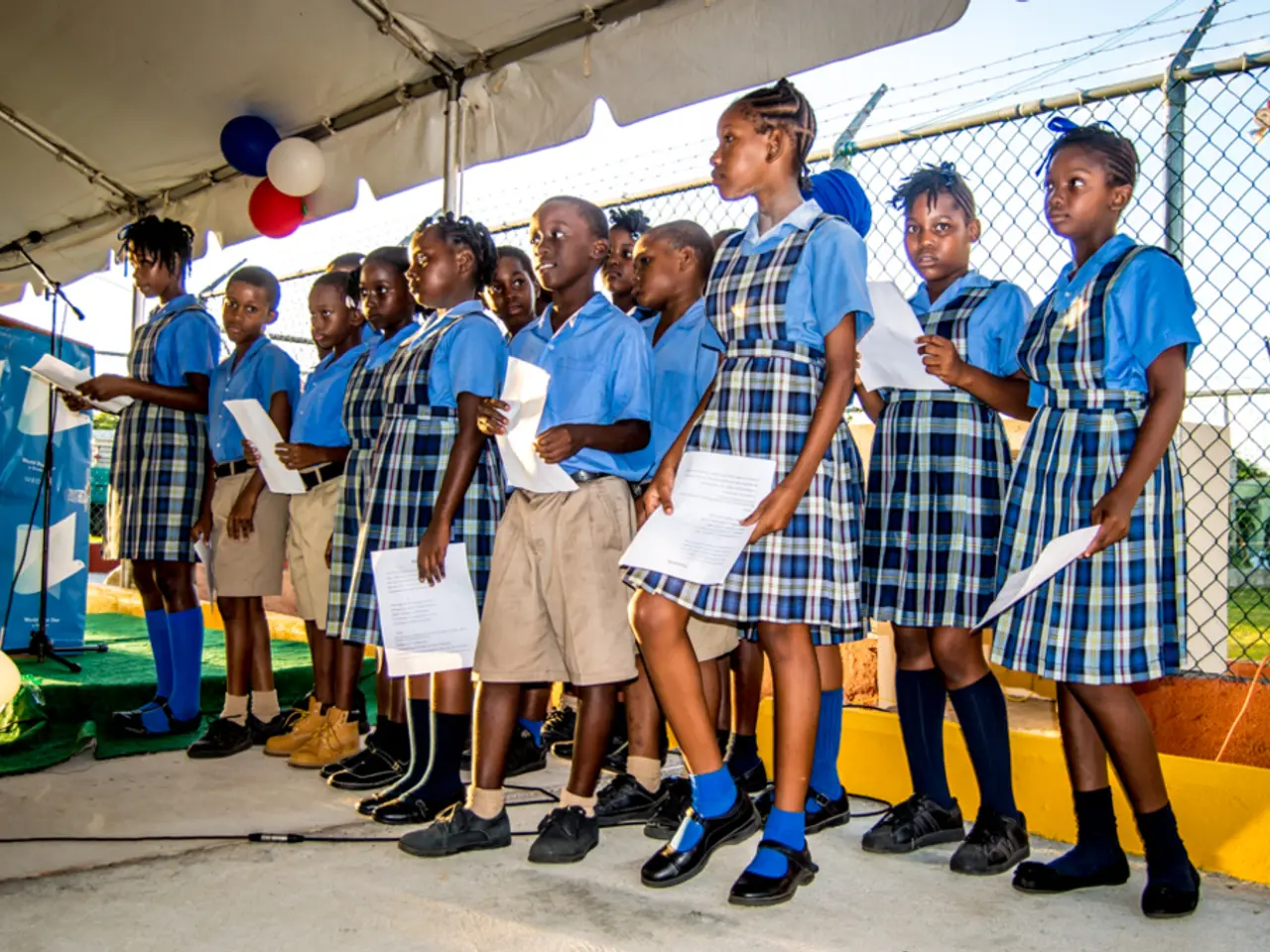Summer Vacation Approaches: The Impact of Intense Heat on Child Development
Children's Health and Education Under Threat from Extreme Heat
In a world where temperatures are on the rise, children's physical and mental health are under significant threat.
Physically, children are more susceptible to heat-related illnesses due to their inability to regulate temperature efficiently. Symptoms in children can range from faintness and intense thirst to more serious outcomes such as heatstroke and even death[1][2]. Children with respiratory conditions like asthma are particularly at risk during heat events combined with poor air quality[1][5].
Mentally and developmentally, extreme heat disrupts routines and limits outdoor activities, which can impact children's emotional well-being and development. The instability caused by repeated extreme weather events — including heatwaves and related phenomena like wildfires — may contribute to stress and developmental challenges in young children[2][3].
Research suggests that excessive heat exposure during early childhood can have both immediate and long-lasting impacts on development and health. For instance, sleep deprivation due to extreme heat can have long-lasting consequences on children's ability to process emotional experiences[3].
Practical measures to mitigate these effects include ensuring children stay hydrated, limiting outdoor exposure during peak heat times, using air conditioning where possible, and implementing community-based interventions to protect early childhood development from rising temperatures[1][3][4].
On the educational front, schools must adapt to these new extremes. Effective cooling is a "powerful and exciting antidote" for schools. Lowering a classroom temperature from 30 degrees Celsius (86°F) to 20°C (68°F) can improve performance by about 20 per cent[6]. However, according to the Thomson Reuters Foundation, an estimated 171 million students had their schooling disrupted by more intense, longer, and more common heatwaves last year[7].
The disruption of classrooms can lead to varying experiences for children based on their access to resources or caregiver situations. Parents may also face economic implications if they cannot leave work due to school closures.
Despite these challenges, experts like Burghardt refuse to accept a dystopian view of a world where children cannot go outside. They emphasise the need for resilient infrastructure, climate-smart education, and community-based solutions to ensure a safe and healthy future for our children.
References: 1. Extreme Heat and Children's Health 2. Health Effects of Extreme Heat 3. Heat Stress and Children's Brain Development 4. Protecting Children from Heatwaves 5. Asthma and Heatwaves 6. Cooling Classrooms Can Boost Learning 7. Heatwaves Disrupt Schooling for Millions of Children
- Addressing climate change, particularly extreme heat events, is crucial for safeguarding children's health and well-being, a concern within the realm of health-and-wellness, environmental science, and science.
- A rising global temperature increases the risk of carbon emissions contributing to harmful climate change, potentially exacerbating heat-related illnesses and mental health issues in children.
- To combat this, preventative measures such as ensuring hydration, reducing outdoor activities during peak heat hours, and implementing resilient infrastructure can help protect children's health and development from the impacts of extreme heat.
- Strides in climate-smart education and community-based solutions are essential to ensure a safer and healthier future for children, fostering an environment where they can continue to learn and grow without the threat of climate change undermining their emotional well-being and development.




